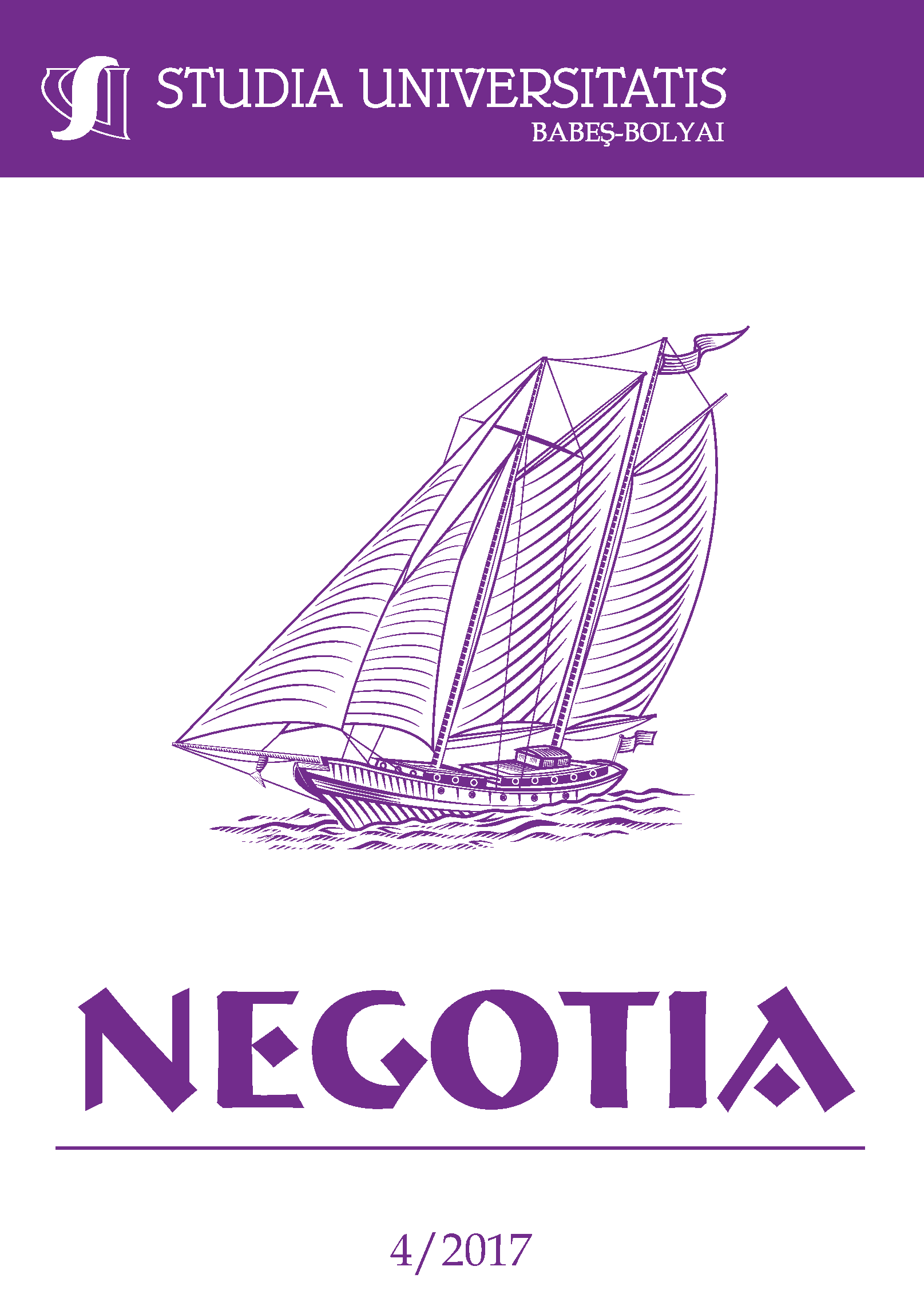SME ACCESS TO FINANCE IN EMERGING ECONOMIES: A COMPARATIVE STUDY OF PAKISTAN AND MALAYSIA
DOI:
https://doi.org/10.24193/subbnegotia.2017.4.01Keywords:
SME, Pakistan, Malaysia, access to finance, emerging economies.Abstract
It has been widely accepted that SMEs make a significant contribution to the socio-economic and political infrastructure in both developed and developing countries. SMEs make up more than 96% of all businesses in emerging economies that provide two out of three private sector jobs. Yet, the importance of SMEs notwithstanding as confronted with several hindrances which impede their development. In emerging economies access to finance has been found as one of the major constraints to SMEs growth. In Malaysia and Pakistan SMEs contributing towards economic growth, however huge finance gap for SME sector exist in both countries. By summarizing current data this paper highlights the share of SME sector towards economic growth, financing gap and supply/demand side challenges towards access to finance in Malaysia and Pakistan. The comparison of both countries revealed that challenges are more severe in lower-middle income country (Pakistan) because of inappropriate policies and their implementation. However, the upper-middle income country (Malaysia) consistent growth can minimize the finance gap for SME sector quickly.
JEL Code: M1
References
Robu, M. (2013). The dynamic and importance of SMEs in economy. The USV Annals of Economics and Public Administration, 13(1 (17)), 84-89.
International Finance Corporation, (2017). MSME Finance Gap – Assessment of shortfalls and Opportunities in Financing Micro, Small and Medium Enterprises in Emerging Markets Retrieved from http://www.ifc.org/ 27 April, 2018.
Ayadi, R. and S. Gadi. 2013. “Access by MSMEs to Finance in the Southern and Eastern Mediterranean: What Role for Credit Guarantee Schemes?” MEDPRO Technical Report No. 35/April.
Beck, Thorsten and Asli Demirgüç-Kunt. 2007. “Small and Medium-Size Enterprises: Access to Finance as a Growth Constraint.” Journal of Banking and Finance 30, 2931–2943.
Khan, M. M. (2015a). Sources of finance available for SME sector in Pakistan. International Letters of Social and Humanistic Sciences (ILSHS), 6, 184-194.
Khan, S. (2015b). Impact of sources of finance on the growth of SMEs: evidence from Pakistan. Decision, 42(1), 3-10.
Khan, M. W. J., & Khalique, M. (2014c). An Overview of Small and Medium Enterprises in Malaysia and Pakistan: Past, Present and Future Scenario. Business and Management Horizons, 2(2), 38.
Ramlee, S., & Berma, B. (2013). Financing gap in Malaysian small-medium enterprises: A supply-side perspective. South African Journal of Economic and Management Sciences, 16(5), 115-126.
Wang, Y. (2016). What are the biggest obstacles to growth of SMEs in developing countries?–An empirical evidence from an enterprise survey. Borsa Istanbul Review, 16(3), 167-176.
International Finance Corporation, (2014a). Islamic Banking Opportunities Across Small and Medium Enterprises Pakistan, Retrieved from http://www.ifc.org/ 12 December, 2015.
International Finance Corporation, (2014b). Islamic Banking Opportunities Across Small and Medium Enterprises Middle East, Retrieved from http://www.ifc.org/ 12 December, 2015.
Hallberg, K., & Konishi, Y. (2003). Bringing SMEs into Global Markets. In Pathways Out of Poverty (pp. 229-245). Springer, Dordrecht.
Hussain, J., Ismail, K., & Akhtar, C. S. (2015). Market orientation and organizational performance: case of Pakistani SMEs. Arabian Journal of Business and Management Review, 5(5), 1-6.
Haniff, A., Akma, L., & Lee, S. (2017). Access to Financing for SMEs: Perception and Reality. Bank Negara Malaysia, 1-6.
SME Annual Report, (2016/17). SME Development and Outlook, Retrieved from http://www.smecorp.gov.my/ 22 April, 2018.
SME Annual Report, (2016/17). Access to Finance, Retrieved from http://www.smecorp.gov.my/ 22 April, 2018.
Qureshi, J. A. (2012). Financial Quota of Loans for the SME Sector in Pakistan: A Survey in Karachi. Interdisciplinary Journal of Contemporary Research in Business, 4 (5).
Chughtai, M. W. (2014). Impact of Small and Medium Enterprises on Economic Growth: Evidence from Pakistan. Standard Research Journal of Business Management, 2(2), 019-024.
Hussain, J., Ismail, K., & Akhtar, C. S. (2015). Market orientation and organizational performance: case of Pakistani SMEs. Arabian Journal of Business and Management Review, 5(5), 1-6.
Zabri, S. M., Yusoff, W. F. W., Ahmad, K., & Lean, J (2011). Literature Review on Financing Preferences among Small And Medium Enterprises.
Bank Negara Malaysia, (2016/17). Feasibility Report, Retrieved from http://www.bnm.gov.my/ 22 April, 2018.
V. Ragananthini, (2017). Alternative way of financing – way to go for SMEs. Retrieved from https://www.pressreader.com/malaysia/the-sun-malaysia/20170410/281784218951478 29 Apr, 2018.
Sherazi, S. K., Iqbal, M. Z., Asif, M., Rehmanand, K., & Hussain Shah, S. S. (2013). Obstacles to small and medium enterprises in Pakistan: Principal component analysis approach. Middle-East journal of scientific research, 13(10), 1325-1334.
State Bank of Pakistan, (2016). National Financial Inclusion Strategy Pakistan. Karachi: State Bank of Pakistan.
State Bank of Pakistan, (March-2017). Quarterly SME Finance Review: Infrastructure, Housing & SME Finance Department. Karachi: State Bank of Pakistan.
Downloads
Published
How to Cite
Issue
Section
License
Copyright (c) 2017 Studia Universitatis Babeș-Bolyai Negotia

This work is licensed under a Creative Commons Attribution-NonCommercial-NoDerivatives 4.0 International License.



